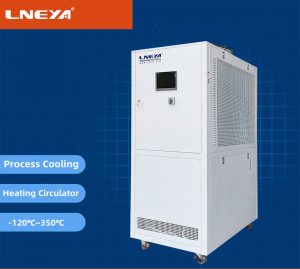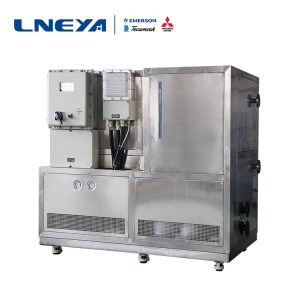Porque é que é necessário instalar um refrigerador para arrefecer o depósito de armazenamento de água?
The main reasons for configuring a chiller for cooling the water storage tank are related to the following aspects:
Temperature Control: In many industrial and commercial applications, such as air conditioning systems, chemical processes, food processing, pharmaceutical production, etc., the water in the water storage tank needs to be maintained at a specific low temperature state to meet process requirements or provide cooling capacity. The chiller reduces the temperature of water in the storage tank by circulating cooling water or refrigerant, and maintains this temperature within the set range to ensure stable system operation and product quality.
Improving Efficiency: In some applications, such as the comparison between air-cooled water chillers and water-cooled chillers, it is mentioned that chillers can provide higher cooling efficiency by directly cooling circulating water instead of relying on ambient air for heat dissipation. Especially when the ambient temperature is high, the chiller can provide low-temperature water more stably, avoiding the impact of environmental temperature fluctuations on the cooling effect.
Save Water Resources and Energy: The cooling system of the water storage tank equipped with a chiller can reduce water consumption by circulating cooling water. Meanwhile, modern chiller design emphasizes energy efficiency and adopts energy-saving technologies such as variable frequency drive and high-efficiency heat exchangers to reduce energy consumption.
Equipment Protection: In some process flows, such as reactor cooling in pharmaceutical processes and precision equipment cooling in semiconductor manufacturing, the chiller stabilizes the cooling water temperature to prevent equipment damage or performance degradation caused by high temperatures, thereby extending the service life of the equipment.
Environmental Adaptability: In areas with unreliable natural water sources or high temperatures, chillers can provide stable cooling capacity and are not affected by external environmental changes, ensuring uninterrupted cooling services throughout the year.
Flexibility and Scalability: The chiller can adjust its cooling capacity according to actual needs. For systems that require flexible adjustment of cooling capacity or may be expanded in the future, the chiller provides good adaptability and scalability.
In summary, configuring a chiller for cooling water storage tanks not only ensures precise temperature control and improves overall system efficiency, but also plays an important role in protecting critical equipment, saving resources, and adapting to different environmental conditions.
customized indoor and outdoor chillers
Recomendações relacionadas
-
Equipamento de apoio ao reator da indústria farmacêutica termóstato de alta e baixa temperatura
1436O termóstato de alta e baixa temperatura é um dispositivo de controlo de temperatura utilizado na indústria farmacêutica para aquecer o reator durante diferentes períodos de tempo. O seu funcionamento é simples e cómodo e pode melhorar rapidamente a subida da temperatura e a...
Ver detalhes -
O princípio e a aplicação do processo de arrefecimento da produção na engenharia farmacêutica
1928A engenharia farmacêutica refere-se à utilização da química. O processo de engenharia de transformação de matérias-primas em medicamentos através de uma série de processos de produção que utilizam conhecimentos científicos e meios tecnológicos como a biologia e a fisiologia...
Ver detalhes -
Instruções de proteção comum do compressor do chiller de temperatura ultrabaixa
1428O compressor do chiller de ultra baixa temperatura é uma parte relativamente importante de todos os seus componentes. Durante o funcionamento, são necessários determinados dispositivos de proteção para ajudar o compressor a funcionar em segurança. Que tipo de proteção específica? Vamos dar uma olhadela! O m...
Ver detalhes -
Princípio do sistema de controlo da temperatura da TCU
2090Área de utilização: pode ser utilizada em várias áreas à prova de explosão A unidade de controlo de temperatura (TCU) é utilizada principalmente no aquecimento de reactores, no controlo da temperatura de arrefecimento em processos de química fina, química farmacêutica e biofarmacêutica. Pode efetuar o controlo aut...
Ver detalhes
 LNEYA Refrigeradores industriais Fabricante Fornecedor
LNEYA Refrigeradores industriais Fabricante Fornecedor














